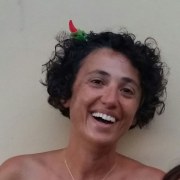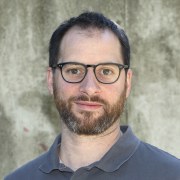How to communicate the future of science?
Find this session's presentations here.
We're living in a fast-paced world. Scientific discoveries are made each day leading to countless technological applications affecting all aspects of our life. Science engagement organisations are bravely taking on the challenge, of digesting this constant and growing flow of brand new scientific and technological information to keep their public informed. This is already challenging, but are we taking the next step? Are we getting ready to talk about yet-to-be discovered science?
Without falling into science fiction, can we create and lead constructive exhibitions and conversations about the future of science and its applications? And… is this even our role?
We will start the session with fast-paced talks that will set the scene to a "fishbowl discussion". The outer circle of the fishbowl will be silent, actively listening the fixed speakers panel at the centre. One or two open chairs will be available in the centre for anyone from the audience who wishes to join in. The discussion will be recorded in a live blog in combination with a compilation video.
A futuristic discussion on how to communicate the future of science. Don't miss it!
Facilitator
Head of Public Engagement
Session speakers
Senior Curator & Researcher
Ars Electronica Futurelab
I will give insight on the Sparks project, the European Art & Science Network and our day-to-day business at Ars Electronica Futurelab. We consider our work as sketches of possible scenarios to come, in art-based, experimental, interdisciplinary forms. Creating tangible objects and visualisations of future scenarios allows us to access a variety of audiences and have an influence on how our society comes to terms with these future innovations. But can the cross fertilisation of ideas and experience in such interdisciplinary projects have an impact on science and research as well?
No one can predict the future – not even the experts. Therefore as a communicator for future discoveries you should have at least two skills. First, gain the confidence of your audience – as an established Science Center or Museum you might have that already. Second, empower your audience to decide for themselves. At the Vienna Technical Museum for example we do that in placing future science and technologies in the middle of our historical collection. They form a synergy and are placed in line with the well known technologies people find in our house. By this juxtaposition we allow the audience – in large parts students of primary and secondary schools and family audience – to compare future developments with the present or the past. And give them a hint of the future potential.
Future science and technology are the discoveries that could be made by one of our visitors - be they answering one of humankind's fundamental questions about the universe, designing better diagnostic tools for medicine or imagining a way to lower energy loss by improving long distance power lines. Future science creates vocations. It can inspire and motivate. I'll share how we tackle the unknown in CERN's Microcosm exhibition.
European Commission Joint Research Centre
In response to a few major crises (BSE) and (mis-)uses of technology (GMO) over the last couple of decades in Europe, the European public has become much more sceptical about technologies, especially with regard to food and health risks, and has lost a lot of its trust in scientific experts. Large companies pushing technologies on the market create rejection when they fail to help the public answer the question 'what's in it for me?' However, answering this question is not easy. It requires holistic & systemic approaches. The story of GMOs is a clear illustration of what happens when industry is not able to help the public answer the question 'what's in it for me?' or having fully engaged and reassured all relevant stakeholders.
Future oriented serious gaming can help create a meaningful engagement by offering participants a holistic experience involving diverse stakeholders. It can also help technology providers prepare for responsible risk communications. In the case of the JRC Scenario Exploration System, key to this is the cascade of information generated by participants when discussing emerging technologies, something that is being explored by the NANO2ALL project.
I will share my experiences working on the Innovation and You exposition in the Philips Museum, which had to communicatie Philips' future efforts in health care technology. We had to get 5 abstract ideas into understandable and fun interactives/games which had to have a high-tech and futuristic feel as well. The "Innovation drivers', as Philips calls them were: Big data, Imaging, Personalization, Connectivity, Sensing. Each one had its own difficulties, opportunities and learnings, which I will share with you.






